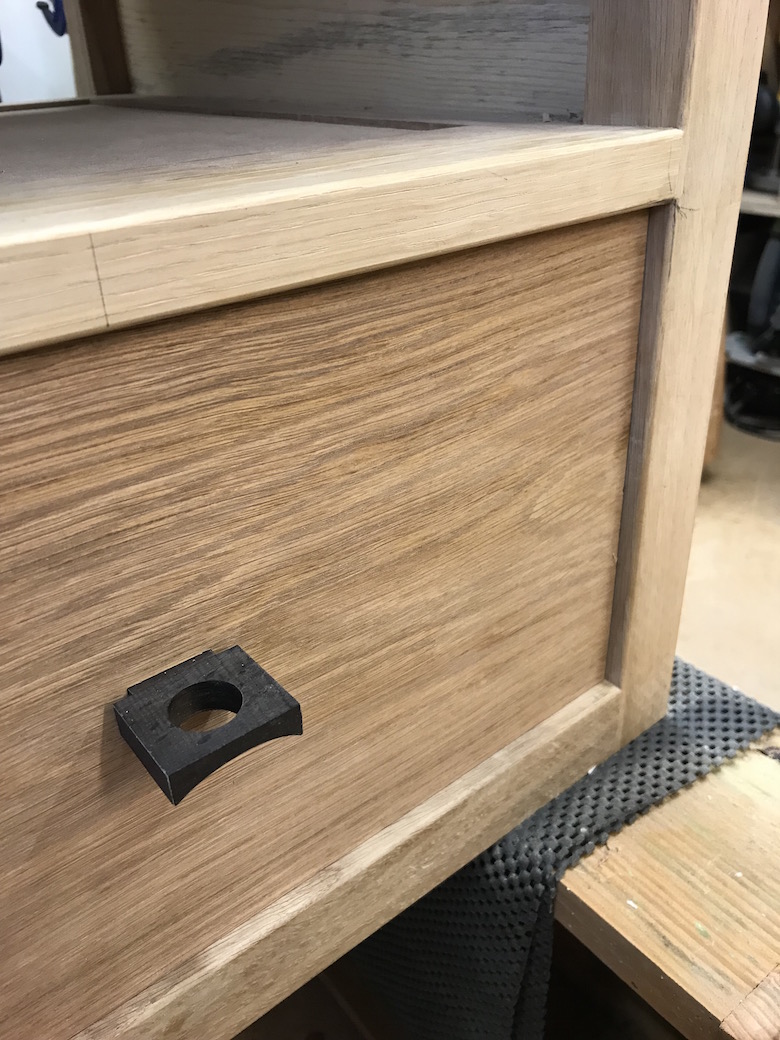GK1":7r8ev61b said:
I've been making drawers with lapped dovetail fronts and with the back held in a simple housing in each side. The sides extend beyond the back which means there's a bit less space but also that it's unlikely the drawer will be pulled right out. Also I've been making the back less tall so the base gets pinned to the bottom of the back.
Now I've seen various references to having the back dovetailed as well. Is this the more traditional method for good quality work ? Does the entire base fit in a groove or is the back made less tall ? Also is there a way to prevent the drawer from being pulled out - I think I've seen a method where the drawer has to be tilted to slide in and as it's pulled out it meets a stop on the cabinet frame.
Yes, as a general rule dovetailing the back with through dovetails is a sign of first quality work, although if you're an undisputed master cabinet maker like say Rod Wales, then you won't use dovetails at all on any of your drawers and that'd still be okay!
Making the back slightly shorter (only by about 5 or 6mm) is important as it prevents a cushion of air building up which will push out other drawers when you push this drawer home, or at least that's what'll happen if you're skilled enough to reliably make piston fit drawers. I know at least one maker who uses this "whack a mole" drawer feature to impress prospective clients regarding his making skills, but it seems a bit tiresome to me.
I wouldn't get too focussed on mechanical methods of preventing drawers being pulled out. It's only really important for very shallow drawers. This is a copy of a Shaker desk that I make quite frequently,
It has a deceptively shallow drawer, so I fit a sprung wooden stop to prevent clients embarrassing themselves, but on 99% of drawers it's simply unnecessary.
There is a trick that was pioneered by Alan Peters where you fit a drawer with some clever shaping that means it tightens up just before it would be pulled out completely. I trained at the same workshop where Alan Peters originally trained, and they recommend against this technique, saying your drawer box and drawer cavity should be straight and true. Far be it from me to disagree with Alan Peters, but having tried both methods I think the workshop is right and it's more trouble than its worth.








































